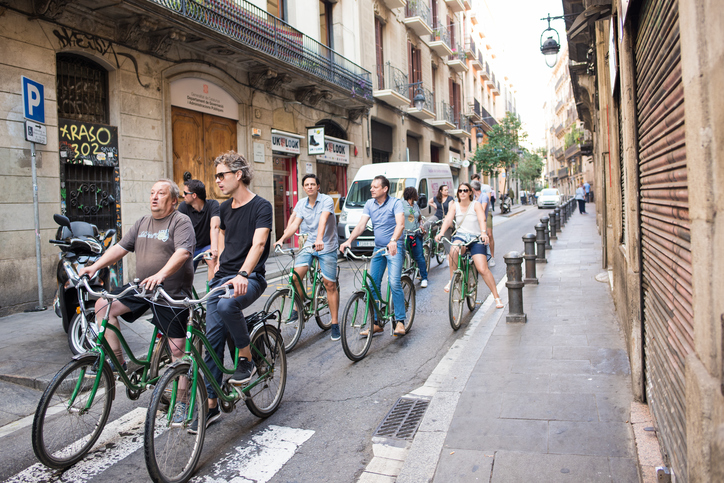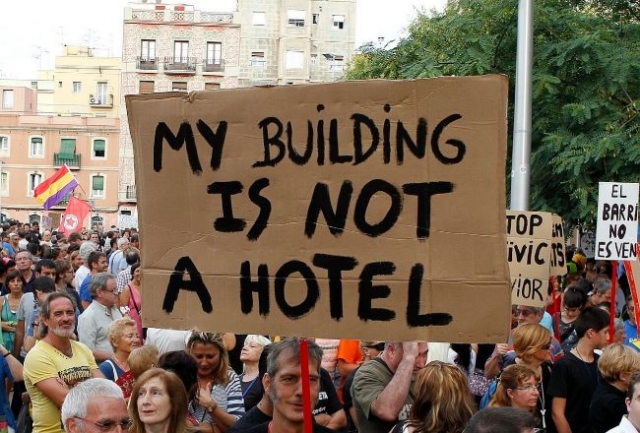Many cities and communities around the world live directly or indirectly from tourism. Regardless of where this happens, those who manage this tourism are on the hunt for quality, not quantity.
Recently, Marbella City Council closed an agreement with a network of luxury tourism agencies, Virtuoso, which includes representatives from America and Oceania. The city’s mayor called the agreement a “great opportunity” to promote the area as a destination for American travellers.
It might well work: more than 1700 agencies, advisors, and establishments in around 50 countries make up the Virtuoso network. And cities like Madrid and Barcelona are already collaborating with them.
Quality tourism is generally taken to mean tourists with high spending power who don’t hold back when on holiday. The resulting profits are then reinvested in local businesses and services.
This year, for the first time in eight years, Spain has not seen any growth in tourist numbers. This has been attributed to various factors, such as the difficulty of beating already high numbers and the resurgence of cheaper destinations and should not be seen as something negative. The fall, of around 5%, has been accompanied by higher spending levels, which is precisely what those on the hunt for quality tourism want.
The latest Tourist Movement on Borders statistics provided by the Spanish National Statistics Institute show that, during May, tourists spent around 3% more than usual, reaching an average spend of €1000 per tourist per trip. In terms of daily spend, figures show a rise of about 3.6% or €150, €4 up on last year.
Most of Spain’s tourists come from the UK, although those numbers fell by 4%. However, they still account for 24.6% of visitors, followed by Germany and France. According to recent statistics, the number of German visitors fell by 1.8%, while French tourists rose by 7%.
An increase in spending
These figures indicate an increase in quality tourism, bearing in mind that foreigners spent 4.1% more than last year, with totals of €29.5 million up from €28.2 million in 2017.
Despite the fact that the growth of tourism hasn’t stopped, it has slowed, growing at a rate of 2% this year, compared to 11.6% in 2017. 2017 was a hard year to beat, and many sectors spoke of the possibility of “dying of success” when speaking about the massification seen in many destinations. That year, Spain welcomed 8.1 million tourists, 200,000 more than in 2016.
In 2018, the average spent per tourist grew by €12 when compared to 2017, while daily spending increased by 3.6%, reaching a total of €150 per day compared to €146 the previous year.

Segmenting tourism – a necessary task
Something that hasn’t varied over the period in question (January – May 2018) is that the top four receivers of tourists continue to be the Balearic Islands, Catalonia, Andalusia, and the Canary Islands.
The Spanish government plans to avoid this by segmenting tourism with the aim of spreading it – and the riches it brings – out to other areas.
Regional governments also agree that quality, excellence, innovation, and technology, as well as history, ancient sights, local customs, and gastronomy, need to be the focus of development.
“Quality” tourists come largely from a group of countries, including China, Korea, the US, and Russia, these four countries making up 12% of the current total. They are often interested in the artisanal and traditional products of the areas they visit.
It is also essential that companies in this sector strengthen their customer service skills. Many already recognise the importance of constantly enabling their employees to help their clients enjoy an excellent – and memorable – stay.
Measures against “tourism-phobia”
The Spanish Government also see the need to eliminate the so-called “tourism-phobia” by improving tourism quality and re-examining the legislation that governs holiday rentals.
Tourism-phobia is a new phenomenon driven in part by societies that have seen parts of their home “invaded” by mass tourism and who are experiencing problems in their daily lives as a result.

Recently an initiative designed to prosecute the resulting acts of vandalism has been put before Congress. Named the “Plan for Safe Tourism”, it also seeks to improve tourism quality, reduce the acute seasonality of tourism, develop rural tourism, and promote the country as a global destination for conferences and conventions.
According to Minister Carmen Navarro, the proposal arises from the need to protect a sector that has “begun to see attacks by extremists” with the aim of “destroying an important foundation of the Spanish economy”.






